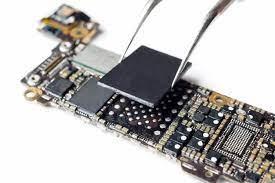As technology continues to advance at a rapid pace, we’re seeing new developments and features that were once thought impossible become a reality. One such development is the concept of Virtual RAM, which is generating a lot of buzz in the tech industry.
Virtual RAM, also known as “swap space,” is a feature that allows a computer to use hard disk space to emulate RAM. This allows computers to increase their memory capacity without having to physically add more RAM modules. This feature has the potential to significantly improve computer performance, especially for those with lower memory capacity.
In this blog post, we’ll take a closer look at Virtual RAM, how it works, and why it’s generating so much hype. We’ll explore the benefits and drawbacks of using Virtual RAM, and what kind of impact it can have on your computer’s performance. We’ll also discuss how to enable Virtual RAM on your computer, and what you need to keep in mind when using it.
Whether you’re a computer enthusiast or just someone interested in the latest technology trends, this blog post will provide you with valuable insights into the world of Virtual RAM and its potential impact on computer performance.
What is virtual RAM?
The performance of your device is heavily dependent on its RAM or memory. It determines how fast apps can run on your device. But have you ever heard of virtual RAM? Virtual RAM is a technology that utilizes software to allocate a portion of your storage memory to support RAM. However, it’s important to note that virtual RAM doesn’t increase your device’s actual RAM. Instead, it creates an additional space to support the RAM.
For instance, if your phone has 4GB of virtual RAM, it means that your storage unit has a 4GB space dedicated to support the RAM. It’s worth noting that a device with 8GB of actual RAM will always be faster and more efficient than a device with 6GB of RAM and 4GB of virtual RAM. In this blog post, we’ll delve deeper into virtual RAM and explain what the hype is all about. We’ll also discuss its benefits and drawbacks, and how it can impact the performance of your device. So, buckle up and join us on this informative ride.
What’s the use of virtual RAM in phones
The aim of implementing virtual RAM is to enhance memory management on your device. As apps and games continue to grow in size, virtual RAM enables your phone to keep more apps open on the RAM. Consequently, switching from one app to another or multitasking becomes smoother and more seamless, allowing you to resume from where you left off for an extended period.
Is Virtual RAM really effective or just a marketing gimmick?
Virtual RAM does not add more RAM to a smartphone, but it does improve the device’s ability to handle tasks efficiently. Think of virtual RAM as an intern to the main RAM module. In this way, the technology is incredibly practical and not just a gimmick.



